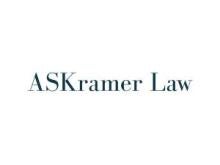Until very recently, the IRS has been silent about the tax treatment of non-fungible tokens (NFTs). An almost unknown market in 2020, NFTs skyrocketed to prominence in 2021 with a capitalization at the beginning of 2021 of $91 million.[1] A common prediction about NFTs is that their “market size is expected to grow by at least 33% year over year and is forecasted to reach approximately $80 billion in net sales volume by 2025 and nearly $350 billion by 2030.”[2]
With the issuance of Notice 2023-27 on March 21, 2023, the IRS has broken its silence on NFTs. This notice is unique in several respects. First, it states that the IRS intends in the future to issue guidance as to the treatment of certain NFTs but only those that should be classified as “collectibles.” Second, the notice signals a more cautious government approach to issuing guidance about the tax treatment of digital assets. Instead of issuing a notice or published FAQs without providing an opportunity for public comments, the IRS is now asking for comments. Third, the notice appears to reflect acknowledgment of recent criticism of IRS guidance that did not follow the notice and comment provisions of the Administrative Procedure Act.
The Nitty-Gritty on NFTs
An NFT is a unique digital asset that is often — but not always — recorded and transferred on a blockchain, that is, a digital ledger. It can be a representation of something; a work of art, a digital trading card, a token in the metaverse, or proof of ownership. It can also be an original creation that exists only in digital form. It can be a single, one-of-a-kind item, or it can be one of any number of replicas of the same content. Just about anything can be represented in an NFT, and it is now common for NFTs to include access to experiences, events, concerts, physical goods, and services.
Each NFT has its own unique metadata, making it non-fungible, so that it is not interchangeable with another NFT or any other digital or non-digital property. NFTs are “smart contracts,” which means their metadata includes the contractual terms and conditions that govern their use. For example, NFT creators embed in NFT tickets the terms and conditions that apply to their use and resale, merchandise available in connection with their use, and the royalties and other property rights that are included. NFTs are generally sold to buyers for an agreed-upon amount of cryptocurrency or the digital token that is native to the blockchain on which the NFTs are recorded. (Some NFTs can now be purchased using actual currency or with a credit card.) The value, if any, of an NFT is only what a willing buyer will pay a willing seller.
What the New IRS Notice Means for Defining NFTs
In Notice 2023-27, the IRS defines an NFT as a “unique digital identifier that is recorded using distributed ledger technology and may be used to certify authenticity and ownership of an associated right or asset.”[3] The IRS views NFTs as having two parts: the digital file itself and the property or rights to which the file provides access. Thus, according to the IRS, NFTs involve a look-through aspect—whatever it is that the digital file “looks through to—whether it is a physical object, digitized assets, or rights.”[4] In seeking public comments, the Department of the Treasury and the IRS ask if the notice provides an accurate definition of an NFT, or whether there are other definitions of NFTs that should be used in future guidance.
Where Guidance on NFT Taxes Stands, for Now
If the right or asset that the digitized file “looks through” to is considered to be a Code §408(m) collectible, the IRS proposes to deem the NFT itself a collectible. By way of example, if an NFT certifies the ownership of a gem, which is a collectible under Code §408(m), the NFT itself is a collectible. On the other hand, if the NFT provides “a right to use or develop a ‘plot of land’ in a virtual environment,” it is not a collectible.
Treasury and the IRS are seeking comments as to whether an alternate analysis may be more appropriate than this look-through analysis. The agencies ask such questions as: What burdens do the analysis impose? How might the analysis be applied to an NFT with more than one associated right or asset where one is a collectible, but another is not? How might the potential for an NFT owner to receive additional rights or assets (such as receiving additional NFTs) be treated?
Clearing Up What Qualifies as Collectibles (and Therefore Taxable)
Examples of Code §408(m) collectibles include art, rugs, antiques, metals, gems, stamps, coins (with certain exceptions for gold, silver, and platinum coins), alcoholic beverages, musical instruments, historical objects, and other “tangible personal property” as defined by Treasury.[5]
But in the context of an NFT, the definition of a collectible is not straightforward. Thus, Treasury and the IRS ask:
-
Can a digital file itself constitute a “work of art” and thus a collectible under Code §408(m)(2)(A)?
-
Can a digital asset be “tangible personal property” under Code §408(m)(2)(F)?
-
What factors might be relevant if the NFT’s associated right is less than full ownership of an asset (for example, if the associated right is simply personal use of a digital file)?
Tax Consequences of an NFT as a Collectible
Collectibles are subject to a higher capital gains tax rate than other capital assets. Under Code §§1(h)(4) and (5), the sale or exchange of a collectible that is a capital asset held for more than one year is taxed at a maximum 28% capital gains tax. Other long-term capital assets at a maximum 20% rate.
Beyond the higher tax rate, qualified retirement plans and individual retirement accounts (IRAs) are explicitly prohibited from holding collectibles. If a retirement plan or an IRA fiduciary invests in an NFT taxed as a collectible, the NFT contribution is automatically treated as a taxable distribution to the participant or IRA owner. This deemed tax distribution is triggered without regard to whether there is an actual distribution to the plan participant or IRA owner.
The trustee of the retirement plan or the IRA custodian is required to issue a Form 1099-R to the participant/owner to report the fair market value of the collectible as taxable income in the year it was acquired.
And, if an NFT constitutes a collectible, it would be a prohibited transaction for a disqualified person for the IRA owner to display the NFT in the IRA owner’s home.
Questions Surround the Look-Through Rule
The look-through rule might make sense on its face if the digital file reflects ownership (license rights) to something else (digital assets), but how far can look-through go? How many layers of digital files might need to be peeled back to get to a digital asset that could be treated as a work of art? Can digital files ever be tangible personal property under Code § 408(m)(2)(F)? If not, the look-through analysis needs to be limited to NFTs that ultimately reflect ownership of a tangible asset (art? gems?).
The IRS asks for comments on whether there are concerns with applying the look-through analysis or if an alternative analysis might be more appropriate. And what about NFTs that provide for more than one associated right or asset where one is a collectible and others are not? What if the owner of the NFT can received additional rights or assets, such as additional NFTs?
The notice focuses on whether NFTs can be collectibles under Code § 408(m) without addressing any of the other important questions about how NFTs are or should be taxed. The request for comments, however, shows that the government is interested in hearing what taxpayers think about NFTs, as the IRS asks if the notice provides an accurate definition of an NFT or if other definitions are more appropriate going forward.
Considering Digital Assets as Art
The IRS offers two simple examples of whether an NFT’s digital files reflect a collectible. First, if an NFT certifies ownership of a gem, it constitutes a collectible under Code §408(m)(2)(C). Second, the NFT is not a collectible if its associated right or asset is a right to develop a plot of “land” in the metaverse. The IRS acknowledges that NFT digital files do not fit the statutory categories of collectibles except, perhaps the category for art.
Questions abound. Can a digital asset (reflected in an NFT’s digital file) ever be art? And, if so, who decides what qualifies as a work of art? Not every visual representation of something is art. When does a digital asset go from merely being a digital representation of something to being a work of art? Must the NFT owner be granted ownership in a tangible asset? Is that the test of when an NFT represents a work of art?
Taxpayers Can Have a Say
Written comments referencing Notice 2023-27 should be submitted electronically or on paper by June 19, 2023. Treasury and the IRS will publish the comments on their public dockets.
Notice 2023-27 shows that the IRS has tipped its hand to treat certain NFTs as collectibles. Unfortunately, it does not address the multitude of other tax questions about NFTs. With that said, interested taxpayers should take the opportunity to provide comments to Notice 2023-27.
Julia Vastano is a Juris Doctor candidate at Cardozo School of Law, Yeshiva University, Class of 2023.
FOOTNOTES
[1] Leeor Shimron, “NFT 2022 Year-End Review,” Forbes, Dec. 21, 2022.
[2] Christian Heidorn, “Shocking Numbers, The NFT Market Size in 2022,” Tokenizedhq.com, Nov. 29, 2022.
[3] Notice 2023-27.
[4] A digital file is not the same as a digital asset, as defined in Code §6045(g). For purposes of reporting by brokers under Code §6045(g), a digital asset is defined as any digital representation of value that is recorded on a cryptographically secured distributed ledger or any similar technology as specified by the Treasury Secretary.
[5] Code §408(m)(2). The definition of collectible is also relevant to Code §45D (new markets tax credit); Code § 1397C (enterprise zone business defined); Treas. Reg. §301.6111-1T; Q&As-24 and -57E (tax shelter registration); and Notice 2004-50, 2004-2 CB 196, Q&A-65 (regarding permissible investments for health savings accounts).




 />i
/>i
